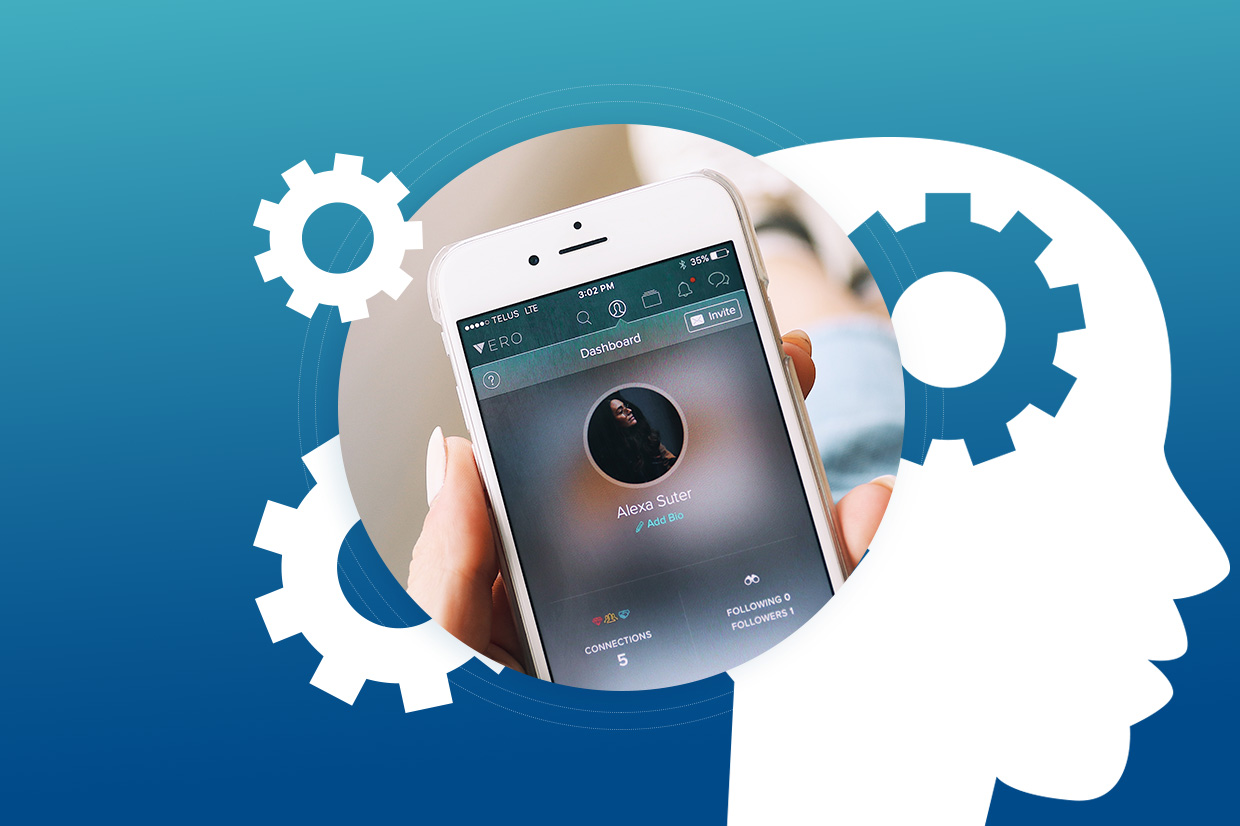
5 Rules to Level Up Your Mobile App Design
Mobile app design is about merging beautiful aesthetics with a high level of functionality.
Your app offers a visual first impression of your business and needs to create a powerful one in order to attract users. However, the aesthetics are not the only function of mobile app design.
Your app also needs to be intuitive, easily guiding users through the experience. For that reason, many of the traditional design laws for web design are critical in mobile app design. Some may be even more critical, as you design for devices such as phones and tablets, that offer users new challenges.
Use these design laws as guideposts to help create the best possible experience for your customers.
5 Mobile App Design Laws to Always Keep in Mind
1. Hick’s Law

Offering users too many choices at the onset makes your mobile app increasingly difficult to use. With every choice comes the need for the user to make a decision, which quickly leads to fatigue. Hick’s law speaks to the simplicity of design and eliminates unnecessary buttons, pages, and options.
It’s important to begin the design process with a firm understanding of the desired function. Anything that goes beyond the scope of that function slows users down, and therefore become unnecessary.
For a real-world example, consider walking into a restaurant where you order at the counter. An above-counter menu with a wide range of options is overwhelming, especially if people are behind you in line.
It’s the same principle in mobile apps. When too many options are presented at the start, a user may likely close or delete the app, choosing none of them.
The more intuitive and streamlined the process is, the more likely users are to see immediate value.
2. The 80/20 Rule
In the context of mobile apps, this law emphasizes a low number of people will be responsible for a high number of your conversions.
With the right design considerations, you can work to increase the number of people who convert.
Determine the critical step you want users to take and make sure that it is emphasized and easy.
If your goal is for people to contact you, every piece of your design should guide users to your contact form or your contact information. Good design simplifies the process and eliminates unnecessary steps.
However, this law has programming implications, as well.
For example, Microsoft noted that by fixing 20 percent of the most reported bugs, 80 percent of the negative implications and crashes can be eliminated – drastically improving mobile app user experience.
3. Fitts’ Law
This law states the time required to move to a target is determined by its size, and the distance to the target.
In terms of mobile app design, Fitts’ law serves as a reminder to use large, clickable buttons, simplifying the experience for your users.
One common mistake is making only the menu type clickable, instead of an entire tab.
As people use their thumbs and fingers to navigate on mobile devices, making objects more clickable will keep your app friendly.
However, there are reverse applications for Fitts’ law, as well. Use this law to emphasize the path you want people to take through large, clickable calls to action while making alternative routes smaller and more subtle.
4. Accessibility
Web accessibility standards transfer over into the mobile application world.
A truly great mobile app design allows people affected by disability to use the apps seamlessly.
These standards are more than just the right thing to do. Inclusion is important from both a business and design standpoint.
Many of the accessibility requirements create a better user experience for everyone.
By following accessibility guidelines, you create a better experience for someone using your mobile app in bright sunlight, in a dark room, in a quiet environment, in a noisy environment, in an emergency, etc.
By the very definition of mobile usage, people can conceivably use your app in any of these situations.
5. Mental Models
Desktop and web apps have been designed around physical examples that people have simply gotten used to.
For example, computer files we don’t need are thrown in the “trash.” The documents we do need are stored in “folders.”
It’s all intuitive and based on methods we already used in real life, making the ability to understand the function a smaller leap for the users mind.
Consider designing your mobile app features based on real-life situations, as well.
Whether the tie is subtle or direct, it creates a familiarity with users that makes your mobile app more intuitive and usable.
This shortens a user’s learning curve and creates an easier experience.
Conclusion
These design laws are here to help create a mobile app that resonates with your audience in a meaningful way — achieving a universal appeal when taken into consideration.
Maybe you’ve used them in past work.
Let them guide your design creativity instead of stifling it.
As always, there are likely times when disregarding one of these laws might make sense.
But it helps to have an understanding of the principles to guide your design decisions for an impactful first impression.


Leave a Reply